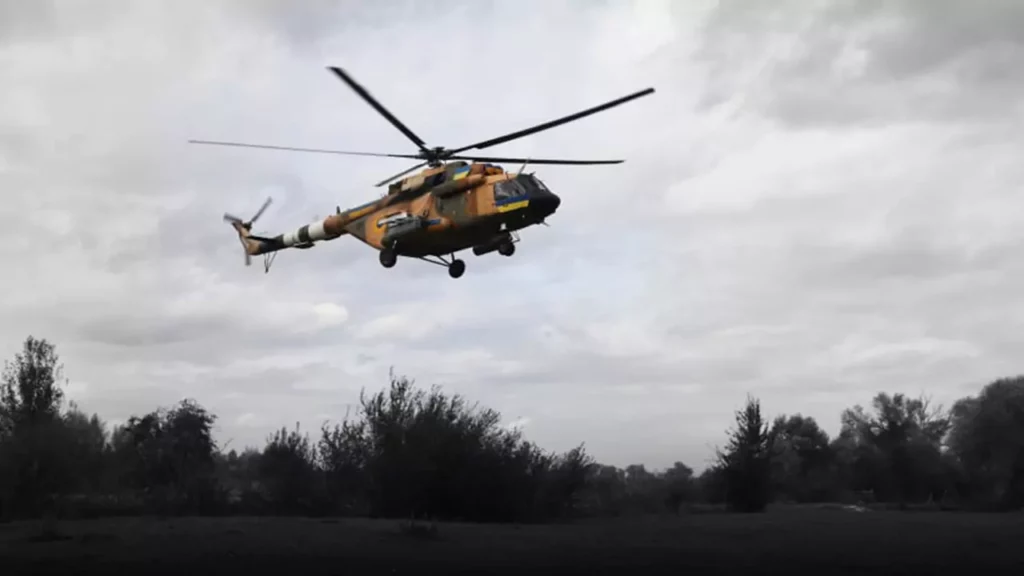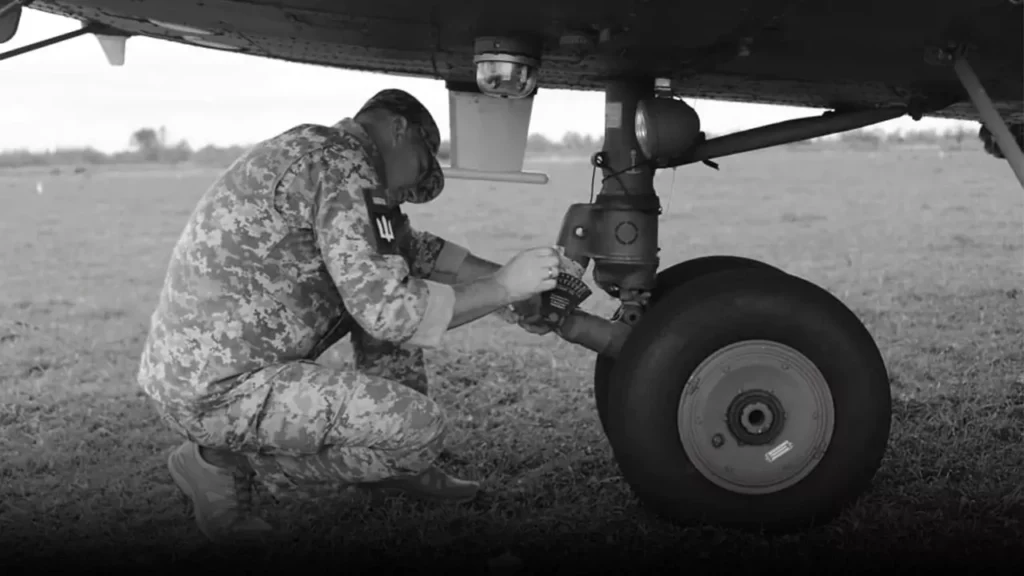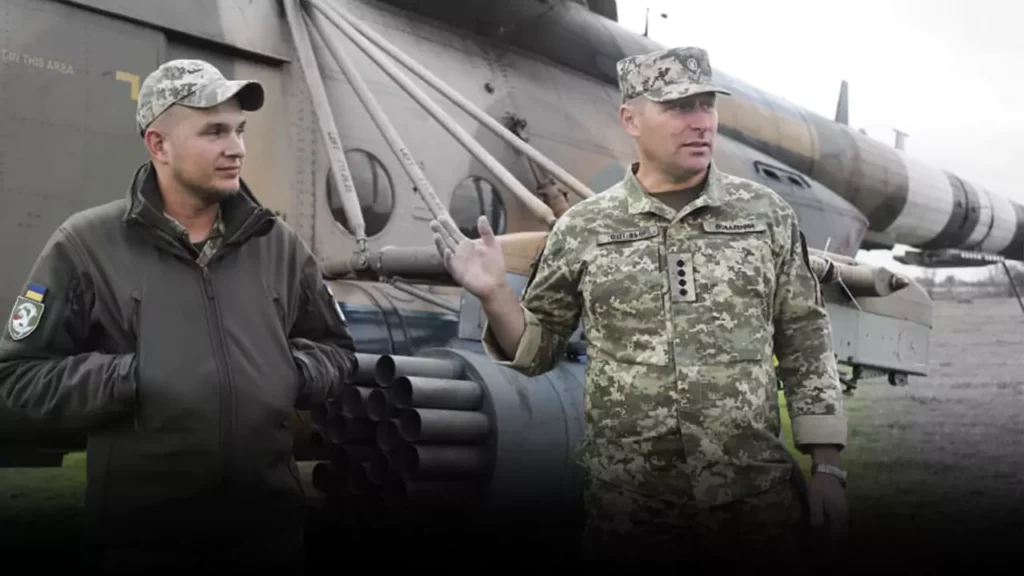Under Putin’s Nose: Ukraine’s Bold Raids Challenge Russian Surveillance
Helicopter pilots tell The Daily Beast about an insane mission where they flew 30 feet off the ground behind enemy lines to rescue wounded soldiers and drop supplies.

Ukraine Under the cover of dawn and fog, Ihor and Andriy’s helicopters flew deep into enemy territory. “We flew at less than 10 meters above the sea to avoid being detected by Russian defenses. Puffing on a cigarette in a training ground outside of Lviv, Andriy told The Daily Beast, “It is very dangerous because you can run into power lines or trees.” For security reasons, Ukrainian service members typically do not disclose their last names. He is only 22 years old, but he has already completed over 30 covert missions in the most hazardous airspace on Earth. “We arrived in Mariupol during the peak of the siege [in April of last year],” he remarked.
When their mission was first proposed, it was regarded as impossible to risk, and maybe because it was so bold and unexpected, it was working. The Russians had encircled Mariupol, the port city, for weeks, enclosing determined defense forces in the Azovstal steelworks. The only means of resupplying the defenders, since there was no land access to the city, was by air. This meant a daring infiltration that required them to cross 70 miles of Russian-controlled territory.
The pilots’ landing surprised the weary soldiers, who had assumed they would be stuck with no way out or to resupply. They picked up injured soldiers for extraction to free Ukrainian territory and unloaded food and ammunition supplies in less than an hour.
As soon as the Russians realized what was going on, they canceled the missions and shot down several helicopters that were on subsequent missions to Azovstal. The missions of Ihor and Andriy served as a reminder of the bravery of the Ukrainian people in the face of seemingly insurmountable odds, as well as their nation’s unwavering commitment to their people.
These helicopters were not supposed to be in service anymore; many of them have rickety, Soviet-era designs that date back decades. On the first day, a barrage of missiles struck Ukraine’s air bases all over the nation, rendering many of the more modern helicopters unusable. However, the pilots had been paying attention to American pleas, and they had quickly moved their most valuable assets out of harm’s way. They are still engaged in combat with the Russians for control of the sky one and a half years into the conflict.
“You see what we can do with those, so imagine what we could accomplish with American aircraft, or French aircraft.”
–Ukrainian pilot
The air war in Ukraine has remained mysterious in comparison to the ground war, which featured intense trench assaults, artillery barrages, and well-documented tank battles. The 10th Army Aviation Brigade of Ukraine granted The Daily Beast access to one of their top-secret training grounds in the country’s west.
The first sounds of the faint whirring of helicopter blades came from a paddock full of about twenty horses grazing. At first, it was no larger than the head of a pin, but as it got closer, the sound of its blades slicing through the air could be heard more clearly. The plane, a Soviet-built Mil Mi-8 with sides painted in the Ukrainian flag’s colors, hung motionless over the field for a short while before making an explosive landing. The horses studied the scene calmly, unfazed.
A model of the helicopter was created in 1967. Although it was upgraded with more armor, it did not have the early warning systems found on more recent aircraft. Still, the pilots here make do with what they have rather than fancy Western gear. The brigade’s helicopters participated in the first battle for Donetsk airport during the Donbas conflict for the first time in 2014. This helped the Ukrainian Army retake temporary control of the airport from separatists backed by Russia in May 2014.
Both sides still use helicopters and jets because the Russians were never able to establish air superiority over Ukraine. However, Andriy has bad news for those who enjoy aerial dogfights in the vein of Top Gun: aviation is only utilized to support ground forces.
Ukraine’s Bold Raids Pilots Challenge Russian Dominance

Air defense systems are present on both sides, so helicopters have to fly low and fast to stay out of radar range. He takes out his phone and plays a video of his helicopter speeding toward the ground in one of eastern Ukraine’s battlegrounds. It then raises its nose to launch dozens of rockets at the trench that is waiting for it, makes an amazing turn in midair, and flies back to safety.
Despite their bravery, they still have superior technology when it comes to aerial combat. When the counteroffensive began in June, the Russians had a beast of their own: the KA-52 “Alligator” helicopters, which gained notoriety for intimidating the advancing Ukrainian ground forces. Because of the devastation they caused to the advancing forces, the Ukrainians dubbed them “Putin’s vultures.”
The Ka-52 HOKUM attack helicopter is one of the most important weapon systems in the region, according to an update from the British Ministry of Defence released soon after the counteroffensive campaign encountered difficulties. “Ukrainian forces continue major offensive operations in Zaporizhzhia Oblast.”

“Sure, Russia has lost a good forty or so Ka-52s since the invasion, but the type has also cost Ukraine dearly. Russia most likely added a few brand-new Ka-52M variants to its force in the south, which are significantly altered aircraft that were learned from Russia’s experience in Syria.
The U.K. Ministry of Defense went on to say that the Ukrainians were ill-prepared to deal with these threats. The addition of the new, roughly 15-kilometer-range LMUR anti-tank missile to the Ka-52 fleet is another significant upgrade. The Ka-52 crews have not wasted any time in seizing the chance to fire these weapons over the Ukrainian air defenses’ range.
While Ukraine needs its best anti-air assets to stop Russian bombardments of its cities, His Ka-52s can stay in relatively safe airspace, out of range of the country’s short-range air-defense systems, with a range of about five miles.
After stating that Ukraine urgently needs American Vipers, Venoms, and the dreaded Black Hawk helicopter gunships, among other weapons and ammunition, one of the pilots said, “You see what we can do with those, so imagine what we could accomplish with American aircraft or French aircraft.” Above all, he said, they need long-range missiles that will allow them to strike Russian positions covertly. The captain calls the officer to interrupt us, telling us that the crew needs to return to the mission. These pilots barely had a moment of rest before they took off and vanished over the horizon.

The following morning, we observed shocked Telegram channels, as Ukrainian helicopters had successfully launched an unexpected attack on Russian positions in the Zaporizhzhia region—which were purportedly well-defended by Russian air power. Helicopters passed by without restriction. What is the source of these?” a Russian military blogger raged.
“I’m not sure. However, they were observed flying westward toward Kopani in Robotyne. After completing their task, they made their way north. This is the Ukrainian Armed Forces’ second known instance of such an operation.
Although the helicopter pilots in Ukraine were silent about their missions, we couldn’t help but wonder if the men we had just met had managed to carry out another incredible raid.








